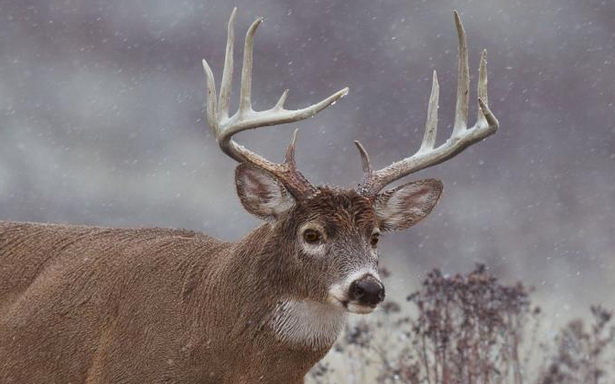A Buck in Any Weather: Capitalize On October’s Heat, Wind, Rain, and Snow
Photograph by Donald M. Jones If September marks the end of summer, and November hints at the coming of winter,...


Photograph by Donald M. Jones
If September marks the end of summer, and November hints at the coming of winter, October suffers from an identity crisis. From gorgeous Indian summer days to blizzards that rival midwinter, October has more extremes of weather than any month of the season. Naturally, deer alter bedding, feeding, and travel patterns in response, and knowing what they’ll do during each extreme can help put a buck in front of you in any weather.
Heat
Whitetails are wearing their winter coats now, so the same 70-degree day that didn’t faze them a month ago is suddenly the equivalent of a sauna. Deer typically respond by limiting their activity to the coolest parts of the day, so forget the midday hunt. They also switch bedding and feeding to areas featuring cooler temps: north slopes in hilly or mountainous country, creekbottoms and lakeshores on flatter ground. A place that’s even a few degrees cooler can make a huge difference to a deer.
Wind
In most areas, any wind over 20 mph will affect deer movement. Whitetails will either lie low until the front blows through, or shift their movement to areas that offer relief: the lee side of slopes in hilly country, dense stands of conifers, or low-lying swamps and marshes in flat terrain. If you don’t have good stand sites in these areas, wait to hunt until the gales die down. Some of the best whitetail activity will occur in the 12- to 24-hour period immediately following the windy weather.

Photograph by Lance Krueger
Rain
Adjust your efforts to the severity of the precipitation. Whitetails will hunker down in a deluge, so follow their lead and stay at home. But a light mist or drizzle often goads bucks into a walkabout, and there are few better times to be in a stand. Bucks may shift movement toward open areas (a food plot, CRP land, ag-field edges) because the rain can rob them of their hearing in dense timber. Set up in an open area because you won’t hear a buck coming. You’ll need to see him.
Snow
Snow isn’t common this month, but nothing can cause an explosion of buck activity as much as the first white stuff of the season. If your scouting has revealed active scrapes, now is the time to hunt them, as bucks will be anxious to freshen them up after the snow cover. High-carb food sources like cut corn or soybeans are an ideal spot to set up for evening hunts; the first snow always seems to send whitetails into a feeding frenzy. But don’t neglect a good oak flat for morning and midday hunts. Bucks will feed actively in such a covert dining spot during—and immediately after—a good snowfall.
